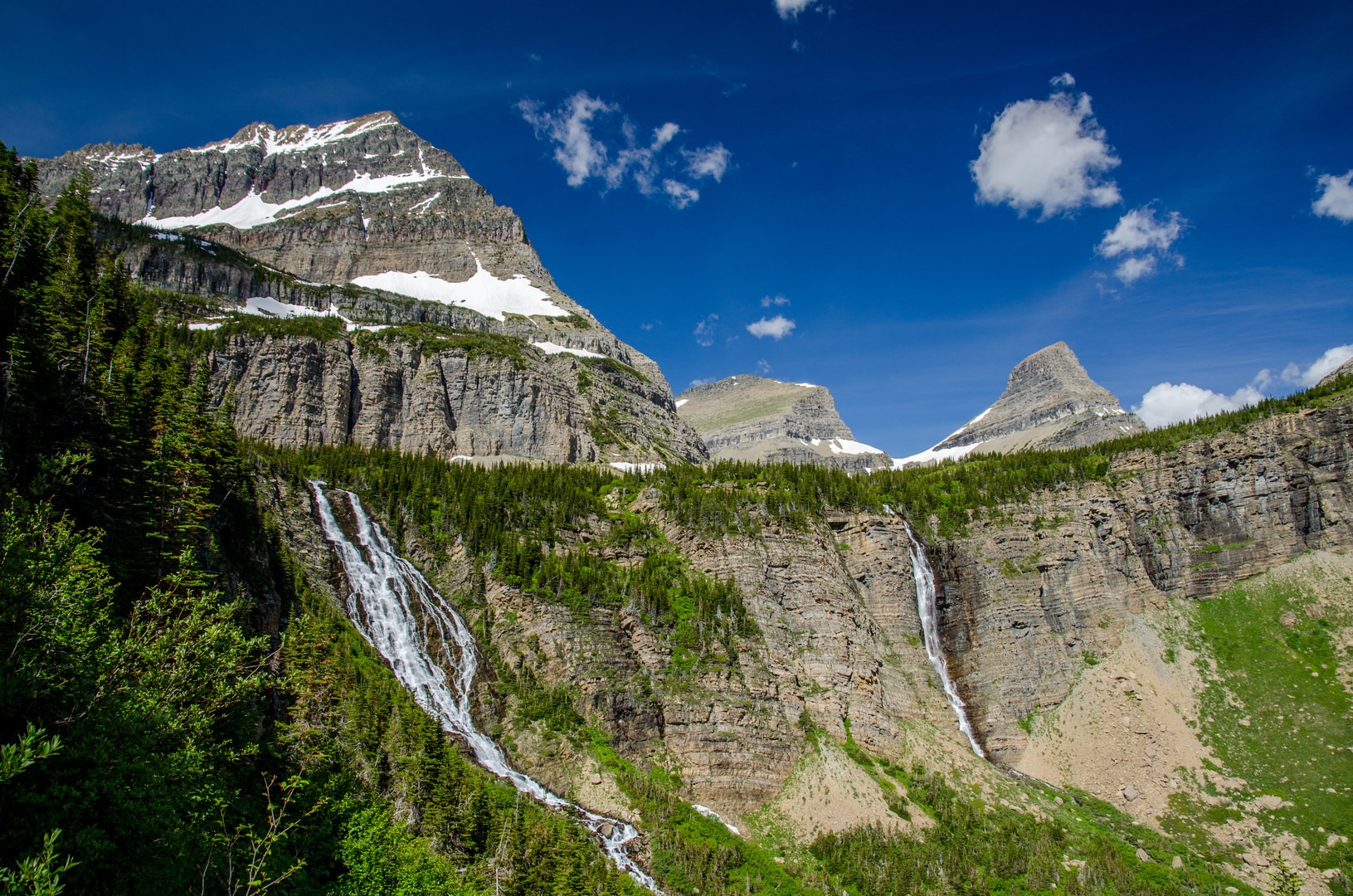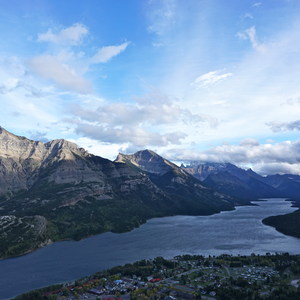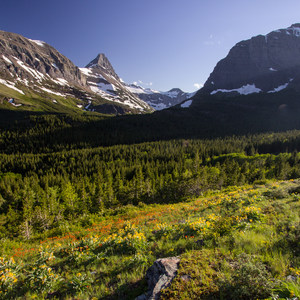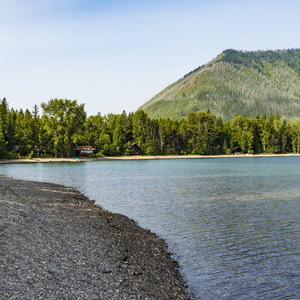You are here
Of the thru-hikers who decide to embark on the full challenge of the Pacific Northwest Trail, more often referred to as the PNT, most travel from east to west and begin their journey in Glacier National Park. The first 55 miles take you through the breathtaking scenery of Glacier National Park before crossing the North Fork Flathead River and reaching Polebridge, Montana, the first resupply town along the way. The journey through Glacier can be done in two to three days if the hike warrants a quick pace, but given the incredible landscape on this part of the trail and some of the later stretches of the journey that are long and at times monotonous, taking an extra day in the national park isn't a bad way to get started.
The trail officially starts at the border of Canada, where the northern terminus of the Continental Divide Trail reaches its end. Make sure your permit is in order and your campsites are reserved for the days you'll be traveling through Glacier National Park. Thru-hikers should stop at one of the park's many ranger stations before beginning the hike. The ranger station nearest to the trail's official beginning is the Saint Mary Visitor Center off of Highway 89 at the northern end of Saint Mary Lake. Most hikers choose to start the trail in late June, which is late enough that most of the snow will have melted. However, be sure to check in on conditions well ahead of that start of your trip, and be prepared for some late season snow cover.
Glacier National Park has numerous regulations to follow regarding how to protect yourself from wildlife, both bears and other critters that may want to get into your food. These are for your safety and for the health of animals that live here. Hikers must obey all restrictions, trail closures, and travel with the proper equipment, especially for bear safety in Glacier National Park. Hikers should carry bear spray and know how to use it in face-to-face encounters with a grizzly bear along the trail. Follow all requirements on food storage, and make sure you are carrying the proper bear canisters. Some parks discourage or prohibit the use of Ursacks, even though they are liked by hikers for their versatility compared with the more rigid bear canisters. The Glacier National Park website has information you will need to review to plan your trip and in-depth information on backcountry camping while you're in the park.
The main PNT route through Glacier National Park follows the Continental Divide Trail (CDT) for 19 miles until reaching the junction with the Watertown Valley Trail. Here the PNT heads north, while the CDT continues south. Near the junction is a spur trail up Porcupine Ridge to the fire lookout, a challenging detour that is worth taking if you have the time and want some impressive views from up high in the park. The fire lookout is still used by park staff in the summer months and gets few visitors.
At Brown's Pass you have reached the point where the PNT crosses the Continental Divide itself. From here the main trail continues southeast on the Bowman Lake Trail and runs for over 6 miles along a scenic section of Bowman Lake. This is Glacier National Park at its finest, with high rocky mountain cliffs that flank the clear blue lake water. At the end of Bowman Lake the trail turns to road for a 9-mile walk into the town of Polebridge. This is the first of what will be many long road walks on the PNT.
An official alternate route heads east from Brown's Pass on the Boulder Pass Trail. This extended route takes you alongside Kintla Lake and Upper Kintla Lake and requires a small off-trail travel section after crossing the North Fork Flathead River as well as a 15-mile walk on Forest Service roads to reach Polebridge.
Some thru-hikers choose to walk all of the roads, while many others hitch or coordinate with the few but growing number of trail angels that provide shuttles to and from the towns that dot the course of the trail. Unlike other popular thru-hikes, the resupplies for the trail are mainly done by purchasing food from grocery stores in the trail towns along the course of the PNT. Most towns offer sufficient options in the small grocery stores to replenish supplies for a week or more, and they offer enough options for a variety of diets.
The town of Polebridge is a slight exception. The Polebridge Mercantile offers fresh sandwiches and baked goods, but it isn't a large grocery store that offers all you might want in a resupply. For most, however, it should be sufficient to cover you until you reach Euraka, Montana, 70 miles further west on the trail. Polebridge is also known for the Northern Lights Saloon and has a few B&B-style inns. Interestingly, Polebridge is an electricity-free community, which brings a great dose of personality to the small town on the western edge of Glacier National Park.
For additional details, refer to the following PNT sections:









Comments
Sign In and share them.